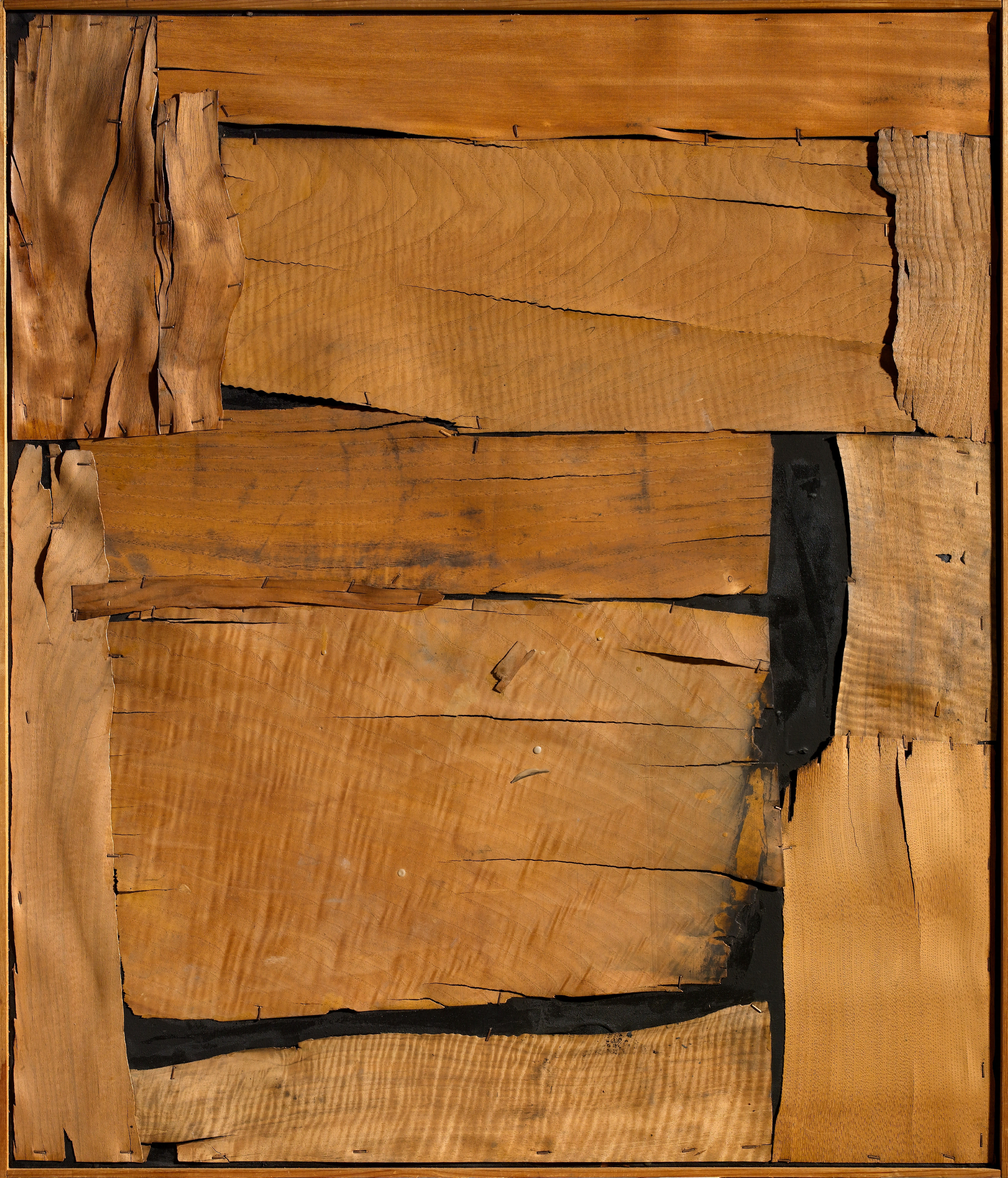Alberto Burri
b. 1915, Città di Castello, Italy
d. 1995, Nice, France
Legno, P1
1958
Acrylic, glue and wood collage on fabric
100 x 85 cm (39 3/8 x 33 1/2 in.)
With frame: 101.5 x 87.4 x 3.5 cm
Provenance
Cologne, Galerie Anne Abels;
Christie's, London, anonymous sale, 2 December 1993, Lot 26;
Germany, private collection.
Literature
Fondazione Palazzo Albizzini (ed.), Burri. Contributi al Catalogo Sistematico, Città del Castello, 1990, no. 1891, pp. 440–41, illustrated.
Fondazione Palazzo Albizzini (ed.), Alberto Burri. Catalogo Generale delle Opere, Milan, 2015, p. 43, II (tav. 736); p. 126, VI (i.5847)
Description
Born in Città di Castello in Umbria, Alberto Burri trained in medicine and served as a doctor in North Africa during World War II. In 1943 he was taken prisoner and held in a prisoner-of-war camp in Hereford, Texas which was where he first began to paint. In 1946 he returned to Italy and the following year held his first solo exhibition; his works from this period were strongly influenced by Expressionism.
At the outset of his career, Burri’s artistic technique evolved rapidly and he began to explore abstraction in vibrant yet delicate works inspired by artists such as Paul Klee. Between 1948 and 1950, however, he was to develop a radical approach to image-making grounded in a poetic exploration of matter that challenged the two-dimensional nature of the wall-mounted artwork. During the 1950s Alberto Burri’s celebration of humble materials such as sacking and tar created a new aesthetic, rich in expressive power, that was later to prove decisive for artists associated with the Arte Povera movement. Critics and art historians have interpreted the artist’s use of unconventional materials as a response to the trauma of the Second World War, a metaphor for the physical and existential wounds of Europe arising from the conflict.
Burri continued to expand and refine his interest in wide-ranging materials over the course of a long career, working with substances such as rubber, pumice stone, plastic and wood, which he variously layered, cut, and charred in the creation of his works. In doing so, he was to become a leading protagonist of Art Informel, focussing on the process as an integral part of an artwork’s significance.
The Legni (Wood) works represent a very limited part of Burri’s work, numbering less than sixty works which span a period of around five years, from 1955 to 1960. In all of them the artist alters the appearance of the wood, adding pieces of canvas, building various layers with glue, sometimes painting sections in red or black, and characteristically burning some areas. On the art market these Legni are very rare; only six examples of such works have appeared at auction over the last ten years. The present work is a fine example of the artist’s pure relationship with the raw material, which he has layered almost like a jigsaw across the picture plane, variously hiding and revealing the surfaces below. A comparable work, although on a larger scale, is today in the colleciton of the Galleria Nazionale d'Arte Moderna (GNAM), Rome (fig. 1). Working with the natural textures and irregularities of the shards of wood, Burri brings to life a piece that embodies the struggle between violent means and strict control that the artist explored throughout the Legni works.
Fig. 1: Alberto Burri, Grande Legno G59, 1959, burnt wood veneers, Galleria Nazionale d'Arte Moderna, Rome.




